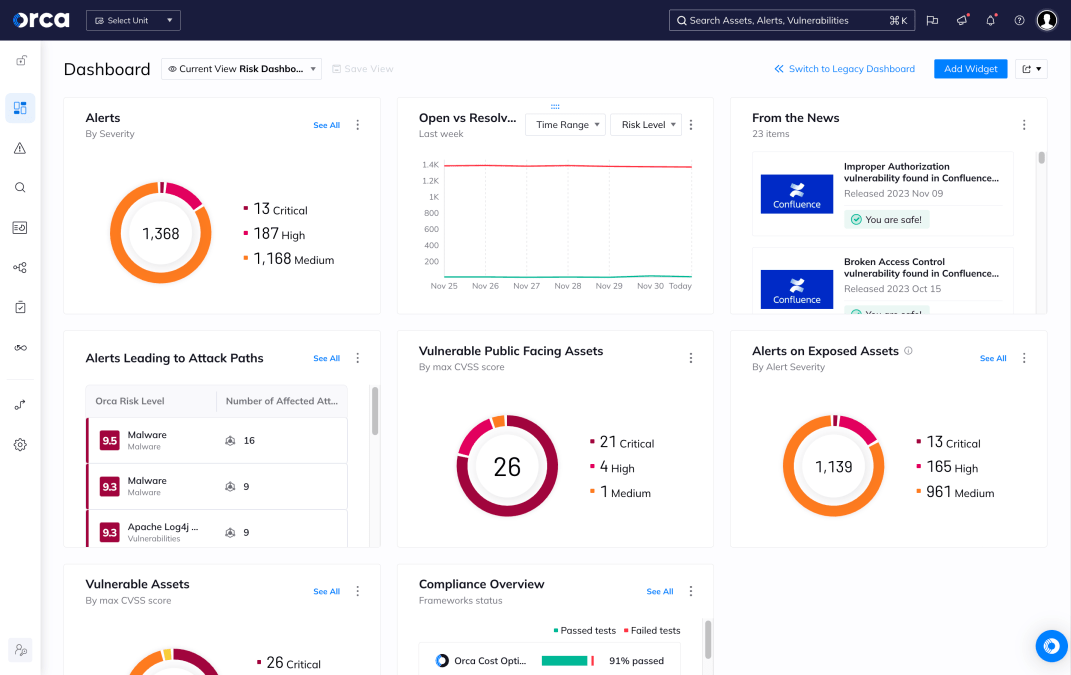A false negative is a cybersecurity failure in which a genuine threat or security issue is present but goes undetected by monitoring tools, detection systems, or policies. In cloud security, false negatives are especially concerning because they allow real threats—such as misconfigurations, compromised accounts, or active attackers—to persist within an environment without triggering any alerts. These undetected risks undermine trust in security systems and increase the likelihood of long-term damage from breaches that remain hidden.
What is a false negative?
In security terms, a false negative occurs when a detection system fails to identify an actual malicious event or vulnerability. For example, a malware sample that bypasses endpoint detection tools without being flagged is a false negative. Unlike false positives, which incorrectly flag harmless activity as malicious, false negatives represent real threats that security teams are unaware of.
Cloud environments are particularly susceptible to false negatives due to their complexity, rapid change, and diversity of services. As organizations scale across multi-cloud architectures, many legacy tools are ill-equipped to maintain coverage across dynamic cloud assets like containers, serverless functions, and short-lived workloads.
Why false negatives matter
False negatives are dangerous because they offer attackers prolonged access and operational freedom. Security tools that miss threats give organizations a false sense of safety, leading them to overlook or underestimate the severity of their risk exposure.
The consequences can be severe:
- Extended dwell time: Undetected attackers can maintain access for weeks or months, deepening the breach.
- Regulatory exposure: Many compliance standards, such as GDPR, HIPAA, and PCI DSS, require demonstrable threat detection and response capabilities. False negatives could result in noncompliance.
- Business impact: Undetected threats often lead to data theft, service disruption, or system compromise. The reputational and financial impact grows the longer the threat goes unaddressed.
In cloud environments, where assets are continuously deployed and modified, static controls or one-time scans often miss risks introduced through configuration drift or ephemeral services.
How false negatives happen
False negatives typically occur when:
- Tools lack cloud-native context: Traditional security tools may not fully understand the structure and behavior of cloud services, leading to gaps in detection.
- Insufficient asset visibility: If a tool doesn’t scan across all regions, accounts, or services, it may miss misconfigurations or vulnerabilities.
- Signature-based limitations: Static detection patterns often miss new or evolving threats, especially zero-day exploits.
- Misconfigured detection rules: Overly narrow detection policies may exclude legitimate attack patterns.
- Normal behavior camouflage: Sophisticated attackers mimic legitimate user or admin behavior to stay undetected.
Key risks and challenges
- Undetected misconfigurations: Cloud services misconfigured with excessive permissions or public exposure often go unnoticed.
- Credential misuse: Compromised access keys used by attackers can blend in with expected API activity.
- Interconnected attack surfaces: A single undetected issue—such as an unmonitored storage bucket—can cascade across multiple cloud accounts and services.
- Skill and resource gaps: Many organizations lack the expertise to tailor security tools effectively to cloud environments, increasing reliance on default configurations that may be inadequate.
According to IBM’s 2023 Cost of a Data Breach Report, the average breach goes undetected for over 200 days—highlighting the impact false negatives can have on dwell time and breach severity.
Best practices to reduce false negatives
Reducing false negatives requires a proactive and comprehensive approach:
- Continuously discover all assets: Use automated tools that identify all cloud resources—including short-lived or serverless components—in real time.
- Implement threat hunting: Don’t wait for alerts—proactively investigate suspicious behavior across cloud logs and API activity.
- Enforce configuration baselines: Use infrastructure-as-code and policy-as-code to maintain consistent configurations and minimize drift.
- Validate detection effectiveness: Conduct red team or purple team exercises to test detection systems against realistic attack scenarios.
- Aggregate and correlate data: Integrate telemetry from across your environment to identify multi-step or cross-service attacks.
- Tune detection logic: Regularly review and refine detection rules to align with evolving threat behavior and cloud architecture.
How Orca Security helps
The Orca Cloud Security Platform helps reduce false negatives in cloud environments by delivering complete and continuous visibility across all cloud assets, services, and configurations. The platform uses an agentless-first approach that eliminates deployment gaps, enabling full coverage across AWS, Azure, Google Cloud, and more.
Orca continuously scans cloud environments to identify vulnerabilities, misconfigurations, exposed secrets, and all other types of cloud risks—regardless of where or how assets are deployed. The Platform correlates these findings with contextual information such as asset criticality, network exposure, and known attack paths, helping teams prioritize what truly matters.



